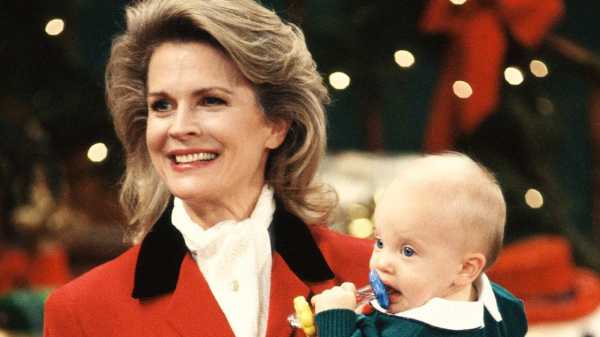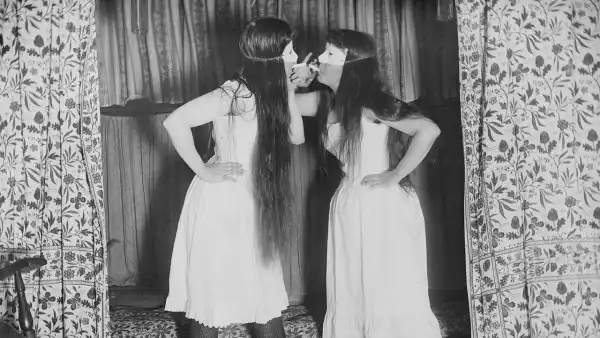
“Magnum, P.I.” débuted in the fall of 1980 and became the first hit crime series of its decade. Playing a haole detective in verdant Hawaii, Tom Selleck wore a lush mustache, a mellow macho twinkle, and an air of suave self-deprecation evocative of James Garner on “The Rockford Files” or of Burt Reynolds snapping his gum. The show was sunny enough to permit crossover episodes with “Murder, She Wrote,” yet sufficiently rad that grade schoolers aspired to own its tie-in lunchbox.
In the new reboot (with Jay Hernandez in the title role, and without that starchy appositive comma in the title), Magnum is a generic, chill dude with an aggro streak. His borrowed Ferrari is faster and more furious. Higgins—the strict head servant on the estate where Magnum provides security—is still a veteran of M.I.6 and still disappointed by Magnum’s all-American vulgarity. But Higgins is now a woman (played by Perdita Weeks), and the camera gazes at her yoga discipline, by way of assessing her fitness as a partner—in life and in crime-fighting—for this cut of factory-farmed beefcake.
The series is ungainly in its rush to get Magnum and Higgins together as a fondly squabbling couple, and it’s uncertain whether the stars share the chemistry to sell a Benedick-and-Beatrice routine, but they sail through the fight scenes just fine. Recently, the lovebirds traded punches with some stock-issue Saudi terrorists, in a case that began with Magnum doing a solid for a Vietnam vet played by Carl Weathers and ended, essentially, with the couple disrupting an attack on Pearl Harbor. At its core, this has always been a show about military ideals of honor. Focussing on Magnum’s bond with his Navy buddies T.C. and Rick, the original series touched on the postwar experience of Vietnam veterans and anticipated “The A-Team” as an action show working through cultural P.S.T.D. The 2018 edition of “Magnum P.I.” lingers on the wounds of Afghanistan and, in quiet moments, dresses them with gauzy kitsch—vague gestures toward valor that resemble flag-waving beer ads. This idiosyncratic private eye is now an assembly-line paramilitary action figure, a basic gamer’s avatar. He has been molded by an age of endless war and by a network dominated by police procedurals featuring interchangeable he-men.
Thirty years ago, when “Magnum, P.I.” went off the air, about a third of the country tuned in to the network news every night, the CNN brand still had a startup glamour, and there was a fever for TV-newsroom comedies. It was the era of James L. Brooks establishing conventions of the in-studio romance on “Broadcast News” (1987), and of “Switching Channels” (1988), a breathlessly hammy version of “His Girl Friday,” with Burt Reynolds and Kathleen Turner romping among a forest of satellite dishes. In the fall of 1988, “Murphy Brown,” created by Diane English, débuted on CBS, and earned some chuckles by treating the vanity and neuroses of TV journalists as endearing foibles.
The show’s protagonist entered reborn, after drying out at the Betty Ford Clinic, to resume her career on a “60 Minutes”-style show called “FYI.” Sonorously played by Candice Bergen, she was snappy and dashing and vividly indomitable, like Martha Gellhorn parachuting into “The Mary Tyler Moore Show,” though with the shoulders of her jackets padded to fill out her yuppie ambitions. In 1992—when “Murphy Brown” was the No. 3 show on air, behind “60 Minutes” and “Roseanne”—the character gave birth to a son, in an episode that earned Bergen one of her five Emmys. Soon after it aired, Dan Quayle, the real Vice-President of the United States, harangued the fictional single mother, ridiculously, as an instigator of the riots that followed the acquittal of Los Angeles police officers charged with beating the black motorist Rodney King. Dodging the topic of racist brutality by seizing on the subject of women’s bodies, Quayle condemned Murphy Brown for “bearing a child alone and calling it just another ‘life-style choice.’ ” English built the contretemps into the show.
On the reboot, Murphy Brown is an icon of herself—a mainstream-feminist center-left mascot and a culture-wars totem—and the show is a de-facto rebuttal of the rebooted “Roseanne” (which, following the excision of its namesake, will return to ABC as “The Conners”). Stirred out of retirement by the Trump menace, Murphy gets a quorum of the gang back together for a morning show and makes like a liberal lion among partisan talking heads. The characters gripe about aging and its indignities, with Corky Sherwood, the Miss America alumna (played by Faith Ford), unsettled by menopause, for instance. Her jokes about hot flashes are so dated that they seem plucked from the original show’s discarded drafts. But the laugh track enjoys it all just fine, and so do the pharmaceutical companies among the show’s advertisers, it seems.
Murphy’s son, meanwhile, has grown up to be a token liberal working the regular-folks-in-diners beat on the conservative Wolf Network. The quality of the parallel to Fox indicates the general tone. Hillary Clinton appears, as a character who interviews to be Murphy’s secretary, in a resumption of a running gag about how hard it is for the heroine to find good help. There is, typically, not really a proper joke in there, just a moment of soft farce dwarfed into insignificance by the current events toward which it gestures. The climax of the first new episode found Murphy on the air speaking her outraged mind to President Trump as he responds, in real time, with insulting tweets. This is wish fulfillment served neat. Watching “Murphy Brown,” you are watching the TV yell at itself.
A CBS sitcom about a liberated woman, starring a liberated woman, “Murphy Brown” was in the tradition of “Maude,” “Rhoda,” “One Day at a Time,” “Alice,” “Kate & Allie,” and “Designing Women.” This streak of CBS programming dried up with the ascent of Leslie Moonves, who last month stepped down as the head of CBS Corporation, after a number of sexual-harassment and assault allegations, and amid charges of gender bias and sexual impropriety throughout the network. (Moonves has denied that he committed sexual assault or engaged in any non-consensual behavior.) Writing in the Hollywood Reporter, the “Designing Women” showrunner Linda Bloodworth Thomason reflected on how, under Moonves’s “misogynist reign,” the network’s passion for female-driven sitcoms yielded to “macho crime shows featuring a virtual genocide of dead naked hotties in morgue drawers.” It was contrary to form for Moonves’s CBS to resurrect “Murphy Brown,” and now the reboot reads as a harbinger of the misogynist’s doom.
The network needs a new way forward. If it is committed to reanimating bygone shows, it could do worse that to revive, somehow, the last feminist sitcom of the pre-Moonves era, “Cybill.” That one, tangling with the structural obstacles faced by aging women in Hollywood, starred Cybill Shepherd as the forty-something actor Cybill Sheridan, and it anticipated the inside-showbiz queasiness of shows including “The Comeback” and “Curb Your Enthusiasm.” It was cancelled—on account of its gender politics, Shepherd has claimed—so abruptly that the setup for a reboot lurks in the series finale. A final title card pops up—“To be continued . . .”—composed with evident haste, in a spirit of weary optimism.
Sourse: newyorker.com






